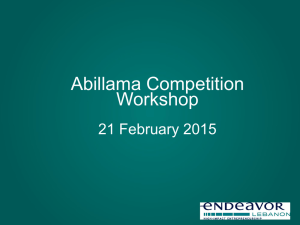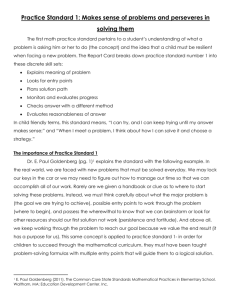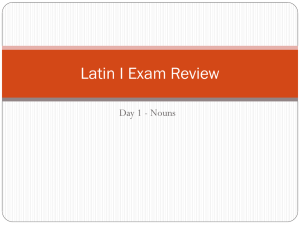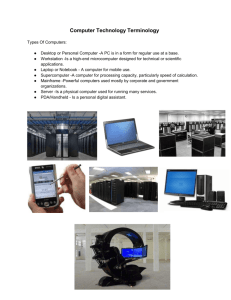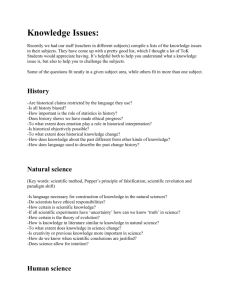Value Proposition
advertisement
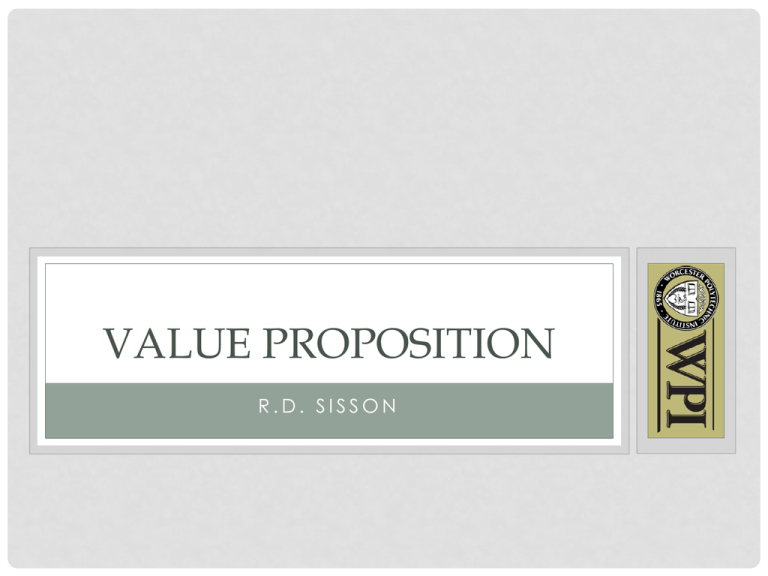
VALUE PROPOSITION R.D. SISSON INNOVATIONS: HOW TO “SELL” THEM THE VALUE PROPOSITION! Can you explain your innovation/thesis in 3 minutes? Including the need, the approach, the benefits and the competition/alternatives? Need • 50mpg? • Zero emissions? • Comfort and style? Approach • Weight reduction by materials substitution? • Improved engine technology? Benefits • Increased market share? ELEVATOR PITCH EXAMPLES • http://www.youtube.com/watch?v=Tq0tan49rmc • http://www.youtube.com/watch?v=QK3ZdaoKXNQ &feature=related • http://www.youtube.com/watch?v=Edgz93EXKk&feature=related THREE MINUTE THESIS EXAMPLES • http://www.youtube.com/watch?v=Hah0OqK7D8M • http://www.youtube.com/watch?v=sUd33kREcxE&f eature=related • http://www.wpi.edu/Admin/Provost/GRAD/2011ipc. html VALUE PROPOSITION DEFINITION Your Value Proposition is: a statement that includes your important customer and market Need along with your new, compelling, and defensible Approach to address that need with superior Benefits per costs when compared to the Competition and/or other alternatives Successful Value Propositions are quantitative and easy to understand and remember The four parts of your value proposition are the fundamentals: they must always be answered AN ALL-TOO-TYPICAL FIRST DRAFT… “The world needs a little red wagon …” AN EVERYDAY EXAMPLE I understand that you are hungry (Need). Let’s go to the Campus Center (Approach). It has great food, it’s quiet, and we can continue our discussion better (Benefits/costs) than McDonald’s (Competition/alternative). We naturally create Value Propositions in our everyday life An SRI employee even developed one for a marriage proposal It worked! When translated to the business environment, they are remarkably rare Remember: only your customer defines your value IMPROVE YOUR VALUE PROPOSITION, BE QUANTITATIVE Need •Not: The market is growing fast •Rather: Our market segment is $2B/yr and growing at 20%/yr Approach •Not: We have a clever design •Rather: We have created a patent-protected, one-step process that replaces the current two-step process with the same quality Benefits •Not: The ROI is excellent •Rather: Our one-step process reduces costs by 50% and results in an expected ROI of 50% per year with a profit of $30M in year 3 Competition •Not: We are better than our competitors •Rather: Our competitors are Evergreen Corporation and Bigway, which use the current two-step process Qualitative statements are not persuasive! I 3 – JUDGING CRITERIA • • • • • • • • • • • • • • • • • • • • • • • • The Need was clearly presented in a compelling presentation. (0 – 10) (0-1) did not hear a need 10 = the need was important and clear. -Is the idea based on a clearly identifiable client/customer need? -Is it innovative, bold, and world-changing? -Has the need been clearly defined and supported? The Approach will meet the Need. (0 – 5) -Does the idea represent a truly original concept? -Has technical feasibility been demonstrated? -Has a reasonable strategy for moving ahead been made? -Is there a path to commercialization? The Benefits of this project are clear. (0 – 5) -Is the value proposition defined? -Is there intellectual property involved? -Is there market data to support the proposed strategy? -Does the idea have a competitive advantage? -Is it a viable investment candidate? The Costs and Competition are clear. (0 – 5) -Have the risks inherent in the idea been identified and dealt with? -Is there a plan to mitigate risks? -Is feasibility based on evidence or assertions? REFERENCES • SRI International • Slides – with RDS additions – from Curt Carlson – CEO SRI • Innovation by Curtis R. Carlson and William W. Wilmot, Crown Business, 2006.
